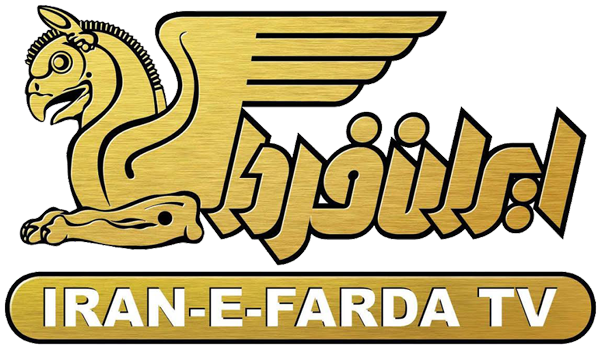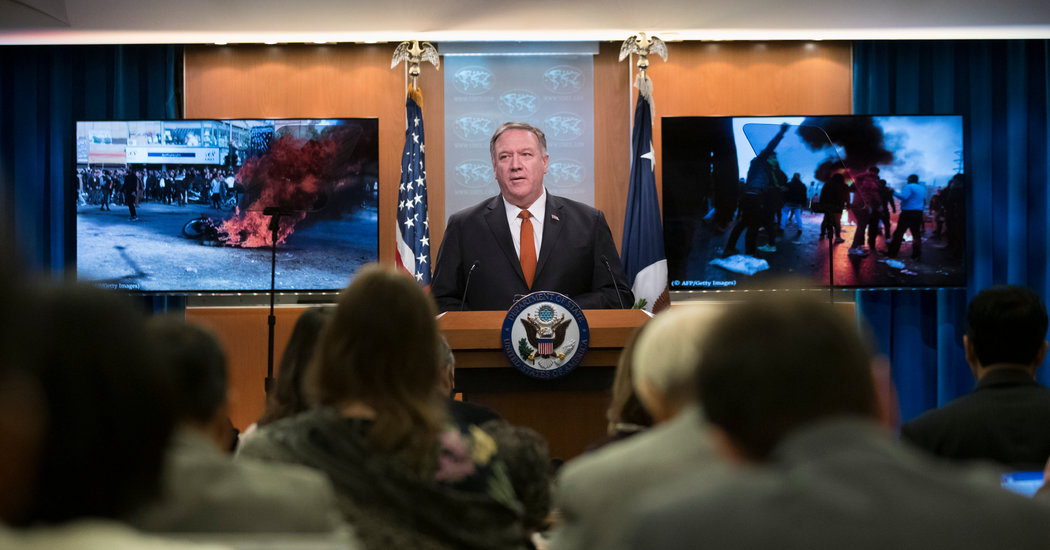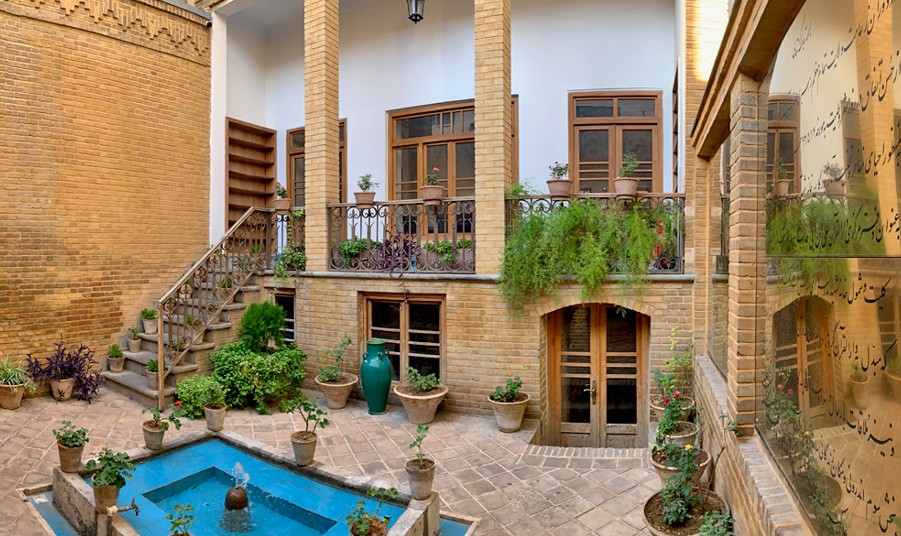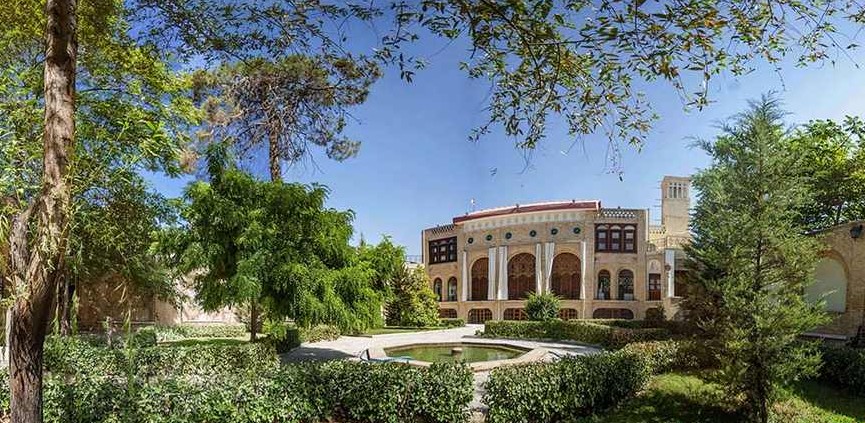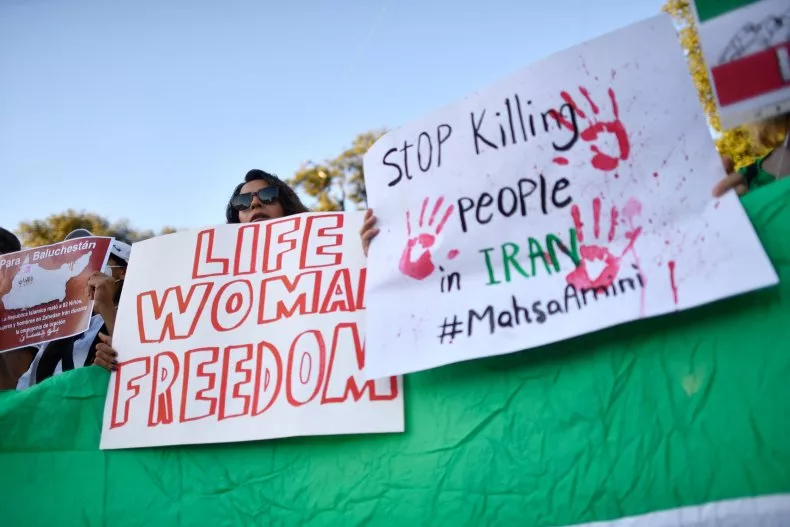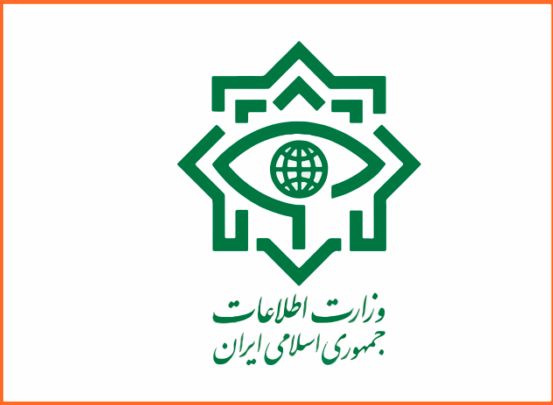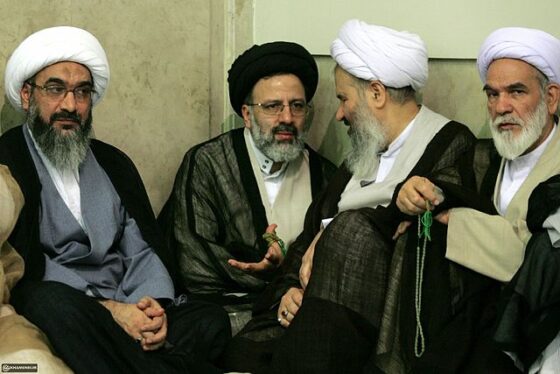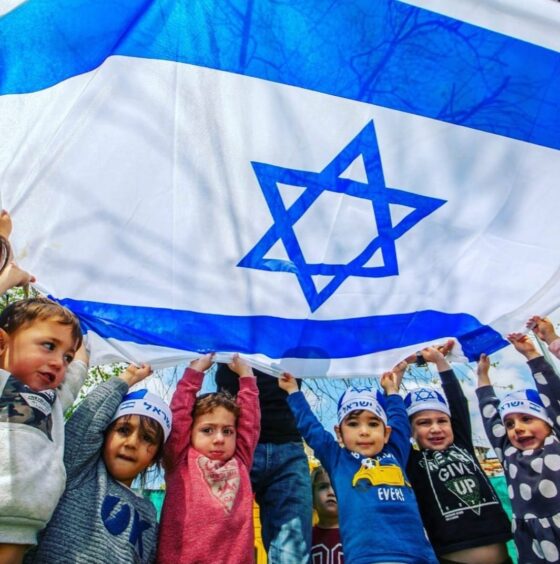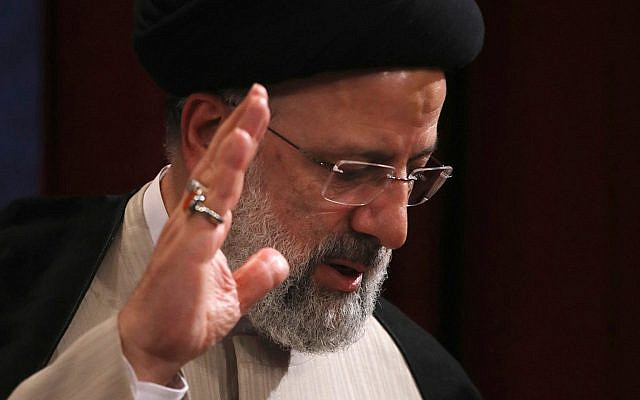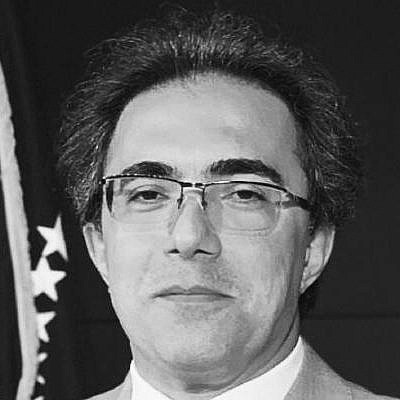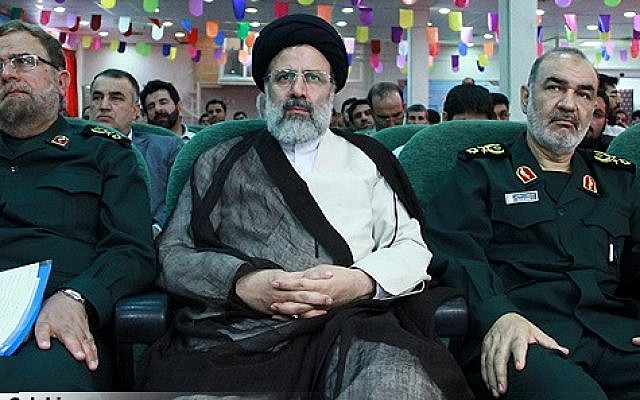The authorities in Iran strengthened their reprisals on Tuesday over the protests that engulfed the country last week, arresting “six main elements” accused of rioting in Tehran and penalizing Iranian journalists overseas who publicized the mayhem.
Although internet service that had been suspended in Iran after the protests erupted has been partly restored, it may be curtailed indefinitely, government officials warned. Mobile phone access to the internet remains blocked.
The intensified response to the protests, reported in official Iranian media, came as Secretary of State Mike Pompeo said that the United States government had received nearly 20,000 messages, videos, photographs and notes from Iranians after his call last week for evidence that the protests had been violently suppressed during the internet blackout.
Mr. Pompeo, whose appeal to Iranians has enraged the Tehran leadership, did not specify what the received materials showed but said, “I hope they will continue to be sent to us.”
The protests began peacefully over the government’s abrupt announcement on Nov. 15 that it was raising gasoline prices by as much as 200 percent and imposing a rationing system, with the proceeds from the higher prices going, it said, to needy Iranians in the form of cash subsidies.
The changes took many people in Iran by surprise and their protests soon turned into violent demonstrations about a litany of grievances in the country of 80 million, where unemployment and inflation have been growing worse.

Listen to ‘The Daily’: A Deadly Crackdown in Iran
Behind the curtain of an internet blackout, the Islamic Republic’s security forces have killed at least 180 unarmed protesters.
Many Iranians blame their government for the country’s economic travails, although at least some of the problems are linked to sanctions imposed by the United States.
Iran’s leaders have accused a mix of enemies, including the United States, Saudi Arabia, Israel, monarchists and seditionists, of exploiting the anger over the gasoline prices to stoke riots in dozens of cities and towns that were crushed by force within a few days.
Despite the internet shutdown that cut off much of the country, many videos and photos were posted that painted an anecdotal picture of widespread street clashes, burning buildings and shootings of unarmed demonstrators, presumably by members of the security forces.
The government has yet to report figures on casualties and arrests, but there are strong indications that the protests were the deadliest in the country since the election unrest that convulsed Iran a decade ago.
Amnesty International has said more than 140 people were killed, mostly by firearms — a figure that officials have criticized as speculative. Two journalists contacted inside the country, speaking on condition of anonymity because of concern for their safety, said they believed that the death toll was at least 218, based on coroners’ reports, with more than 1,900 people injured and at least 7,000 arrested.
The government said last week that about 100 “ringleaders and masterminds” had been rounded up nationwide, and it indicated that more arrests were forthcoming. The police commander in Tehran, Mohsen Khancherli, said Tuesday that the authorities had “arrested six main elements behind violent riots that recently hit Tehran,” and that “the suspects had confessed to their acts of sabotage.”
Officials also moved to punish Iranian journalists abroad who had reported on the protests remotely. The Judiciary announced “legal and judicial restrictions” on assets owned by Iranian reporters at Iran International, a Britain-based broadcaster that Iran’s state-owned PressTV news website described as a “Saudi-Zionist television channel.”
“The broadcaster was at work to disrupt Iran’s security, fan the flames of riots and organize acts of terror, subversion and secession across the country,” PressTV quoted the Judiciary announcement as saying.
The government has warned Iranian journalists inside the country to strictly limit their accounts of the unrest. Last Friday Iranian intelligence agents were reported to have arrested Mohammad Mosaed, an independent economics reporter, at his home in Tehran after he had found a way to bypass the internet shutdown to post “Hello Free World!” on social media.
Iranians reached by telephone on Tuesday also said new anger was brewing over who would qualify for the cash subsidies created by increased gasoline prices.
Originally officials said 60 million Iranians — three-quarters of the population — would be eligible. But Mohammad Shariatmadari, the minister of labor and welfare, told Iranian state television that the government would have to examine the assets, bank accounts and trips abroad of all Iranians to ensure that only the neediest received the benefit. Some experts said that likely meant only about 20 million Iranians would be eligible.
The increased cost of gasoline has already affected prices of everyday goods and transportation. Several Iranians reached in Tehran and other cities said the price of basic goods — rice, oil, bread and dairy — had increased between 5 percent and 10 percent. Iran’s official news agency reported that the costs of public transportation, messenger services and moving goods had spiked by nearly 50 percent.
Lara Jakes contributed reporting.
